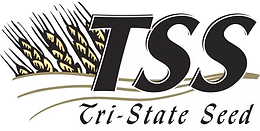CRP/OTHER SEEDS
ABOUT
CRP Blends
Cover crops are grown primarily to benefit the soil and ecosystem. These crops are typically grown during off-seasons or between cash crops in both conventional and organic farming systems. Many cover crops can be grazed by livestock and are rarely harvested.
Some benefits of cover crops are:
- Soil Health Improvement
-
- Increase soil organic matter and biological activity
- Improve sol structure and water infiltration
- Erosion Control
- Roots hold soil in place, preventing wind and water erosion
- Weed Suppression
- Dense canopy shades out weeds
- Nutrient Management
- Legumes fix atmospheric nitrogen
- Grasses scavenge leftover nitrogen to prevent leaching
- Pest and Disease Management
- Disrupt pest cycles
- Some crops (mustard primarily) biofumigate soil pathogens
- Moisture Conservation
- Reduce water loss through shading and mulching effects
GRASSES
TEFF GRASS
dryland areas
KEY ATTRIBUTES:
TIMOTHY
dryland areas
KEY ATTRIBUTES:
IRRIGATED BLEND
dryland areas
KEY ATTRIBUTES:
DRYLAND BLEND
dryland areas
KEY ATTRIBUTES:
A blend of drought tolerant varieties providing a high productivity pasture with quick establishment. Will give a boost to run down pastures. Suits low summer rainfalls
ORCHARDGRASS
dryland areas
KEY ATTRIBUTES:
The primary use of orchardgrass is for pasture and hay forage production. It is highly palatable to all classes of livestock. It is one of the best forage grasses for use in the Northern states under intensive rotational grazing systems.
RYEGRASS
dryland areas
KEY ATTRIBUTES:
Annual ryegrass is an introduced cool-season bunch grass from Europe. Vegetative stems grow erect at first but may grow more horizontally as the plant produces a seed head. Natural reseeding is common
LEGUMES
CLOVER
dryland areas
KEY ATTRIBUTES:
This mix can be used for grazing, a cutting of hay, wildlife food plots, or simply as a cover crop for a season or two.
HAIRY VETCH
dryland areas
KEY ATTRIBUTES:
Harvest later than wheat. Maximum vetch kill when crop is in full bloom. If the vetch is strictly a cover crop, can be plowed under or killed with herbicides or a roller-crimper in a no-till setting, to form a weed suppressing mat.
COMMON VETCH
dryland areas
KEY ATTRIBUTES:
Common vetches are an annual pasture/forage/grain legume, extremely palatable at all growth stages, from early green shoots, as dry matter/hay or silage through to seedpods and seeds over summer
BRASSICAS
MUSTARD
dryland areas
KEY ATTRIBUTES:
This product is grown in an area where Wheat, Mustard and Peanuts are commonly cultivated either nearby or inter-cropped.
CALIENTE ROJO
dryland areas
KEY ATTRIBUTES:
Newest mustard release with purplish/red leaves and the highest glucosinolate production currently available. Vigorous growth with high leaf biomass and extensive root system. Good choice for organic or conventional growers with high disease and/or nematode pressure.
HUNTER
dryland areas
KEY ATTRIBUTES:
This game forage is a superb grain-based mix of triticale forage grain, oats, forage turnips and annual forage clovers. Plant in the spring or fall in most areas to grow palatable, high-protein forage all season.
BIOFUMIGANT BLENDS
COVER
RADISH
dryland areas
KEY ATTRIBUTES:
Also known as cultivated radish, radish, oilseed radish, forage radish. Radishes are commonly used in cover crop mixtures and sometimes as monocultures. If planted early, quick growth can help suppress fall-emerging weeds.
TURNIP
dryland areas
KEY ATTRIBUTES:
Forages of the Brassica family are very useful for extending the grazing season when other forages are less productive. Brassicas can provide higher crude protein and digestibility at half the cost of hay or conserved forages.
HUNTER
dryland areas
KEY ATTRIBUTES:
This game forage is a superb grain-based mix of triticale forage grain, oats, forage turnips and annual forage clovers. Plant in the spring or fall in most areas to grow palatable, high-protein forage all season.
WINFRED
dryland areas
PURPLE TOP
dryland areas
KEY ATTRIBUTES:
This leguminous forb produces excellent forage for livestock and wildlife. It is high in protein and highly palatable, although it may cause bloat. This species will decrease and disappear under persistent overgrazing.
